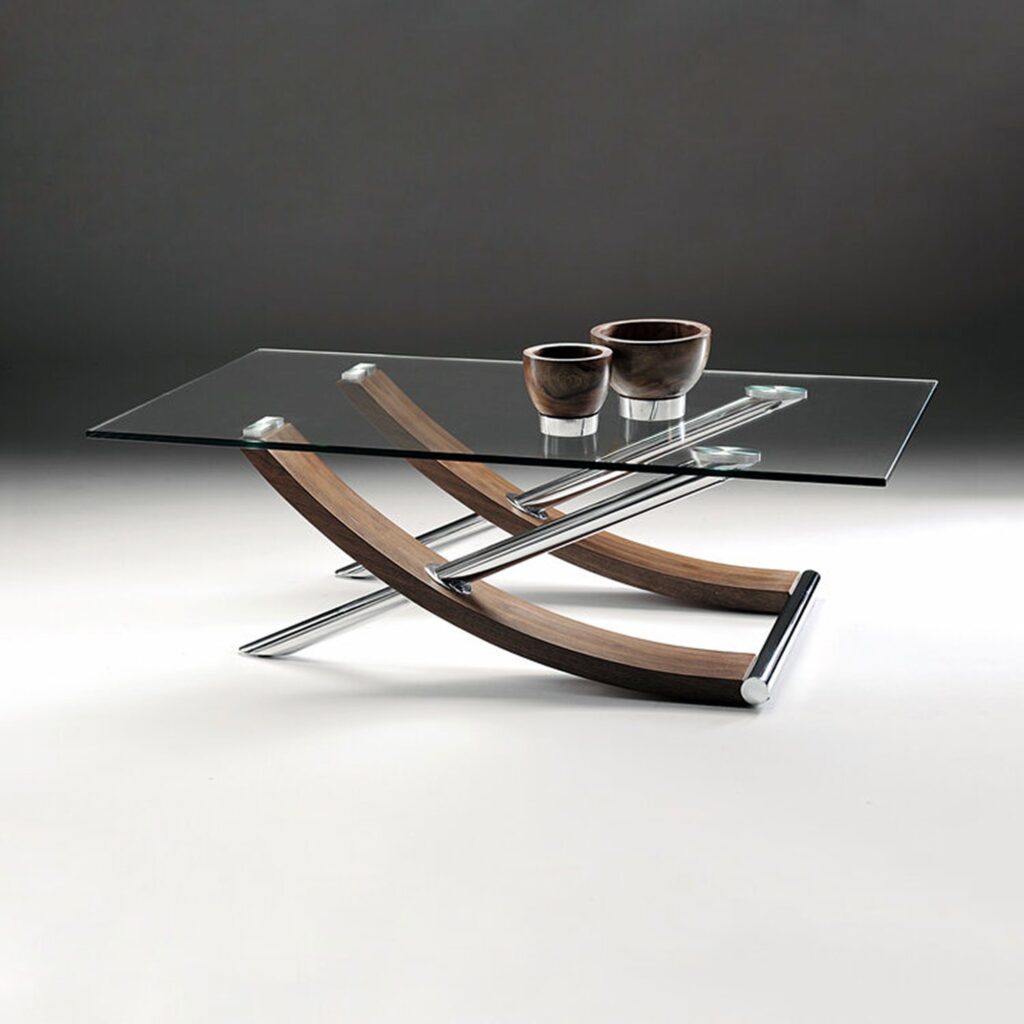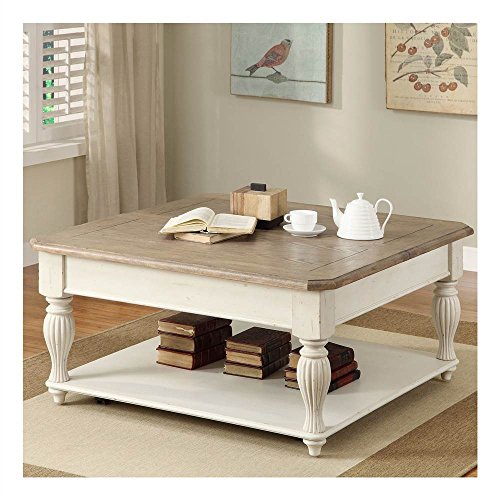Coffee Tables: The Perfect Blend of Style and Functionality
It can be said that a coffee table forms one of the most important elements of your living room design, able to hugely improve or ruin the appeal of a space—not to mention being highly functional furniture.
Be it sleek and modern, rustic and charming, or even opulent and magnificent, the statement brought about by a coffee table is tremendous.
It shall give insight into various aspects of coffee tables, right from their types and materials to styles and, above all, tips for choosing the perfect coffee table for your living room.

1. The Role of Coffee Tables in Home Decor
A coffee table brings everything together, as this is the centre in your living room.
From providing a surface for books, snacks, drinks, and other products to their ability to enhance the beauty of the room, there’s so much they do.
Other than matching with your sofa, rug, and many more furniture pieces, the perfect coffee table will give you space to express yourself with things like candles, flowers, and coffee-table books.
2. Popular Coffee Table Materials
Wooden: coffee tables are classic and come in a large variety of styles, from country to contemporary. Wood type will be a huge factor in the overall style of your table. Oak, walnut, cherry, and pine are common types of woods used. All of them have different colours, grains, and even different levels of hardness. Wood may be stained, painted to coordinate with your decor, or left in its natural state for a more organic appearance.
Glass: Glass coffee tables can also be great for the smaller space since it creates an illusion of a much larger and open area. This will really complement a modern decorative interior as well as a more traditional one. The only thing with glass is that it does need to be cleaned quite often to keep that clean look. This might not suit families with very small children or animals since it gets scratches, or may even break when hit by a pet or falling object. Metal:
Metal: coffee table will give a living room or any other space durability and sleek, modern appeal. Primarily used in industrial interior design, they also find their application as an element of contemporary and minimalist design. Some common metals are stainless steel, brass, and iron, usually finished in a specific way to create an effect—for example, either polished and shiny or flat and sublimated.
Marble: coffee tables bring with them an expanse of luxury and sophistication; since no two pieces of marble are alike because of their natural veining and colour variations, your table becomes the statement piece, single and one of a kind. Marble is very beautiful but porous and easily gets stains, so it needs very careful maintenance to keep its beauty for a longer period. Marble coffee tables are great to fit any iota of elegance into your living room.
Acrylic: coffee tables, also known as Lucite or Plexiglas, show off a very modernistic and minimalist appearance. Much similar to glass, acrylic is clear, giving the illusion of spaciousness. These are really light in weight and thus are handy to move around, making them readily portable and versatile for many different types of rooms.

3. Popular Coffee Table Styles
Modern:
The modern coffee table is distinguished by clean lines, simple shapes, and few ornate details. The base usually includes materials like glass, metal, and acrylic. Colours also tend to be neutral, such as black, white, or grey. Modern coffee tables fit well in contemporary spaces that lean toward minimalism and functionality.
Traditional:
Traditional coffee tables have dark tones of wood with carvings and details that suggest elegance. They are usually oval or rectangular and can also be fitted with drawers or a lower shelf, which adds to the available storage space. These tables bring an air of cosiness and timelessness into the atmosphere of a living room.
Rustic:
Rustic coffee tables bring warmth and cosiness to the home. They are usually made from wood, which undergoes some type of distressing or weathering to give the effect of age. Rustic tables tend to highlight natural materials, like reclaimed wood or metal, and will have a large, rugged design that focuses more on practicality than aesthetics. Industrial
Industrial-style coffee tables take their inspiration from the raw, unfinished look of factories and warehouses. Many times, they couple wood with metal, having exposed hardware and a rugged, utilitarian design to them. With that, they’re ideal to add some edge in the living room and go exceptionally well with modern and rustic decor.
Mid-Century Modern:
A mid-century modern coffee table is patterned after the design trends of the 1950s and ’60s. These modern tables exude clean lines, organic shapes, and mixed materials, like wood and metal. Quite frequently, they hold a weird retro look that can be really appealing, adding much to the vintage feel of your living space.
Scandinavian:
The key principles of Scandinavian design include simplicity, functionality, and natural materials. Scandinavian coffee tables are usually light-coloured, clean-lined, and minimalist in approach. They often represent wood or a mixture of wood and metal, which provides practicality without ever ceasing to amaze with its style.

4. Choosing the Right Coffee Table for Your Space
Consider the Size:
While selecting a coffee table, the most important things that should be taken into consideration would be the size. It should be of a relative size compared to your seating area, probably two-thirds in length to your sofa, and also of the proper height. It should be the same or slightly lower in height compared to the height of your sofa cushions. Insulate ample space around the table for easy movement. The table should have at least 18 inches of clearance between it and the surrounding furniture. Function should also be taken into consideration.
Consider the kind of use your coffee table will get. Do you need extra storage? Does it have drawers or shelves, or maybe even a lower level for books, magazines, or remotes? Or are you an entertaining type who wants a table with a hardy surface that will take spills and wear and tear? If you live in a small space, you might opt for a nesting coffee table or one with a lift-top for added versatility and functionality.
Match Your Style: Your coffee table has to reflect the general style of your living room. A sleek, minimalist table in glass or metal works with a modern space. For a traditional room, one that is wooden with rich tones and classic details is better. Rustic or industrial spaces can include a table with a weathered finish or a combination of wood and metal. Mix and match—what can be a really unique coffee table does bring out your personality and raises interest in your décor. Consider the Material: The material for your coffee table will affect both its look and durability. Wood provides warmth and versatility. Glass gives expansion in small spaces. Metal serves for something strong, contemporary. Marble exudes a bit of elegance and refinement. Also consider your kind of lifestyle and how much maintenance you are ready to put in when you choose a material. So, for example, if you have kids or pets, durability will be the prime factor; metal and wood can be more practical than glass and marble.

5. Styling Your Coffee Table
Keep It Balanced:
Whenever you’re working on placing objects on your coffee table, ensure that they’re balanced in terms of both height and scale. Difference in size and height of objects creates plenty of visual interest— at the same time don’t clutter your table. For instance, you may have a tall vase, a stack of books, and a smaller decorative item in order to have the view balanced and harmonising.
Use Trays:
Trays serve as excellent storage for coffee table items and help to display the area tidily. A tray can help corral smaller items like candles, coasters, and remotes so it doesn’t feel cluttered. Another ambiance that a tray can add to your room is an added layer of texture and interest within your decor.
Add Some Greenery:
Bring life to your coffee table with a burst of colour by decorating it with some plants or flowers. A small potted plant, a vase with fresh flowers, or just a few springs of cut leaves in a simple vessel will add the natural touch in the living room and help soften the overall look.
Incorporate Personal Touches:
Your coffee table is the perfect place to display all your favourite personal knick knacks. Whether it’s a stack of favourite books, a collection of vintage finds, or an art item you love, personalising it will give your coffee table extra interest and warmth.
Change It Up Seasonally:
A seasonal offering lets a coffee table be one of the single nicest things that lend flexibility to it. You can replace items made for decoration, such as candles, flowers, and books, without any big effort. This way, the living room will always look fresh every new season.

6. Coffee Table Alternatives
If a traditional coffee table doesn’t suit your needs or style, there are a lot of creative alternatives.
An oversized ottoman could replace the coffee table but also serve as extra seating or become a comfortable footrest.
A set of nesting tables provides flexibility and can be used together or individually as required.
A vintage trunk or large wooden crate will bring character and offer more storage space.
For a more eclectic look, consider using smaller side tables or stools of different shapes and sizes together in place of a single coffee table.
The coffee table will not only hold water bottles or cups but is also a piece of furniture that can add grace and functionality to the living room.
Whether sleek and modern, rustic and cosy, or classic and elegant, there is just the right coffee table out there to fit your space.
It will bring to your space, as long as you keep considering things such as its size, material, and style, with a dash of decorative flair from your part, an arrangement that speaks both beauty and practicality.
